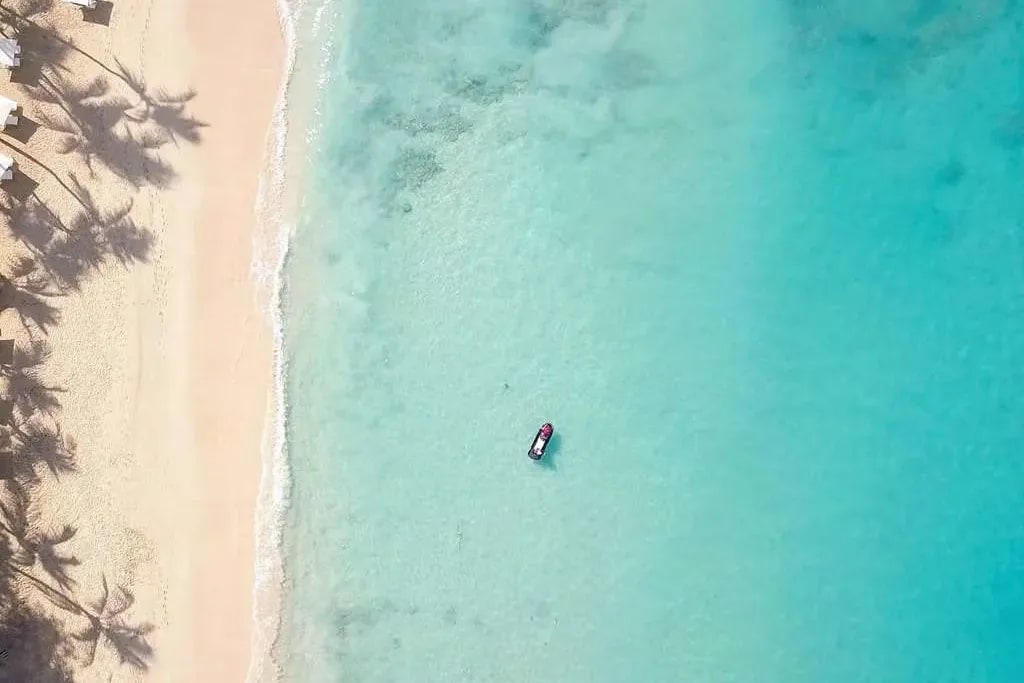Barbados is a Caribbean paradise with amazing weather year round. The island has white-sand beaches and rugged coastlines, world-class surfing and calm waters primed for snorkeling — not to mention exceptional golfing. Chartering a boat to explore the idyllic waters is a must, as is staying at one of the island’s exceptional resorts. But make sure to reserve time for exploring the vibrant local towns (don’t miss the Friday-night fish fry in Oistens).
Below, our guide to Barbados details some of our favorite places to stay on the island, plus what to do and other travel considerations. Connect with Fora for an itinerary tailored to your unique preferences and budget. Our advisors will plan and book your dream Barbados getaway.
Need to know
Currency: The Barbados dollar (BBD) is the primary currency. It rises and falls with oscillations in the US dollar value (it’s always 50 cents to the dollar). Although US dollars are also widely accepted.
Languages: English is the official language of Barbados, but local Bajan dialects are also spoken throughout the country.
Airports: Grantley Adams International Airport (BGI) is the main point of entry. Fora Advisor Gianna Quattrini recommends filling out the necessary customs form online, prior to departure, to avoid long lines when you arrive. Fora Advisor Michelle Zelena added that you should stay at a hotel that offers fast-track services, which help get you on your way so you can officially start relaxing. (An advisor will point you in the right direction here.)
Transportation: The southern coast is not as walkable as the west coast, where it’s relatively easy to resort-hop. You can also rent a car if you want to explore the whole island. It takes a mere 2.5 hours to drive across its entirety.
Best time to visit: Barbados is a year-round destination. Its location below the hurricane belt protects it from the Caribbean’s major storms. Holiday seasons — festive, Easter, spring break, et. al. — bring the most tourists. To avoid the crowds, consider traveling during less popular times, like late summer or early fall.
Ideal length of stay: Five nights is the sweet spot, although with direct flights from several US cities, Barbados also makes for an excellent long-weekend getaway.
Signature dishes: Rum (not a dish, but Barbados is the spirit’s birthplace), flying fish (Barbados’ national dish, a flaky white fish usually served steamed), cou cou (cornmeal porridge traditionally served with flying fish), macaroni pie (cheesy baked pasta casserole), fried fish cakes (often eaten for breakfast), pudding and souse (steamed sweet potato and pickled pork)
What to wear: Barbados was a part of the British Commonwealth until 2021. As such, the island has more of a formal vibe. People get dressed up to go to dinner. Don your breezy linen pants and dress shirts; bring your long, flowy dresses and fancy sandals.
Where to stay
Barbados has two main coastlines. The east coast, which borders the Atlantic Ocean, is known for its rugged, wild, natural beauty. It makes for great surfing conditions (at least for the more experienced surfers among us). The west coast, which borders the Caribbean, is where you’ll find most of the island’s resorts. Expect idyllic white-sand beaches and turquoise waters ideal for leisurely swims. Also don’t overlook Barbados’ south coast, home to the lively neighborhood known as St. Lawrence Gap, but often referred to simply as “the Gap.” Go here for nightlife, restaurants, bars and additional beautiful beaches.




Images courtesy of Sandy Lane
O2 Beach Club & Spa: All-inclusive luxury with an approachable price point, within walking distance from town. The resort is ideal for families with older children, couples and girls getaways. Expect Miami party vibes. Fora Reserve perks include a complimentary 15-minute hammam treatment.
Sandy Lane Hotel: A beautiful, exquisite stay worthy of any bucket list. The service is some of the best you’ll ever experience (there’s a reason Sandy Lane is a favorite among celebrities). There’s also amazing food, a stellar kids’ club, remarkable golfing and a top-tier gym to boot (Mark Wahlberg is a repeat guest). Fora Perks include one in-room 60-minute massage, one complimentary round of golf, breakfast daily, an upgrade and extended check-in/out whenever possible.
Fairmont Royal Pavilion: A beachfront stay with a historic feel, a spectacular main dining room and a laid-back beach club primed for cocktails. Fora’s Accor Preferred by HERA partner perks include $100 resort credit, breakfast daily, an upgrade and extended check-in/out whenever possible.
Cobblers Cove Hotel: A charming, family-owned, intimate boutique property with a colorful marine aesthetic. All furniture was created by local artisans, and 95% of the hotel’s food is grown on the island. Fora Perks include one complimentary lunch for two, breakfast daily, an upgrade and extended check-in/out whenever possible.
Coral Reef Club and The Sandpiper: Family-owned sister hotels with a classic, laid-back island aesthetic on Barbados’ west coast. Fora’s SLH withIN partner perks include $50 resort credit, breakfast daily, an upgrade and extended check-in/out whenever possible.
History and culture

Barbados sits on a mass of coral limestone, unlike other Caribbean islands, which are volcanic. As a result, the water in Barbados is clean and safe to drink; the limestone acts as a natural filter. Barbados was originally inhabited by the Arawak and Carib peoples, although the island's name came from Portuguese explorers. “Los Barbados” means “bearded ones.” It’s believed the explorers were referring to the island’s fig trees, which have long, beard-like aerial roots hanging from their branches.
Barbados’ history is long and complex. The local Bajans are some of the kindest, most hospitable people you’ll meet. The people, more than anything, really make this country special. And they’re rightly proud of their culture and resilience.
The Spanish raided the island in the 16th century, searching for slaves. They depopulated the region, and when the English touched down in the early 17th century, Barbados was virtually uninhabited. The British struggled to find a profitable export crop, but with the help of the Dutch, the colonizers established a highly profitable sugar trade. They subsequently enslaved West Africans to cultivate the lucrative crop.
The country started to see more meaningful reforms in the 1940s, and gained independence in 1966. Barbados was part of the British Commonwealth until 2021, when it became a republic (nearly 70% of tourists are from the UK). But the combination of Caribbean and British influences contributes to a vibrant, colorful culture. And although Barbados’ history has shaped this culture, it’s the local Bajan people who continue to nurture it. They’re the reason you’ll keep coming back.
Activities

Image courtesy of Fairmont Royal Pavilion
Explore the boardwalk in Holetown, where the British first landed on the island in the early 17th century. At night, enjoy cocktails, karaoke and numerous restaurants along its First and Second Streets.
Take a catamaran tour and explore the area’s abundant marine life. Cat & Fiddle, which also serves you lunch, was an advisor favorite following a Fora scouting trip.
Snorkeling is a must in Barbados, especially when done amid the remnants of past shipwrecks.
Visit one of Barbados’ several botanical gardens, where lush tropical flowers, birds and fruit trees await. The National Botanical Gardens, Hunte's Gardens and the Andromeda Botanical Gardens are popular spots.
Rum was born in Barbados. Learn how it’s made and imbibe at a tasting at a local distillery, such as Mount Gay Rum Distillery or St. Nicholas Abbey.
Experienced surfers will love the conditions on Barbados’ rugged east coast, especially in winter.
On Friday nights, everybody heads to Oistens, a small and lively town on the south coast. Attend the local fish fry and soak in the Bajan culture.
